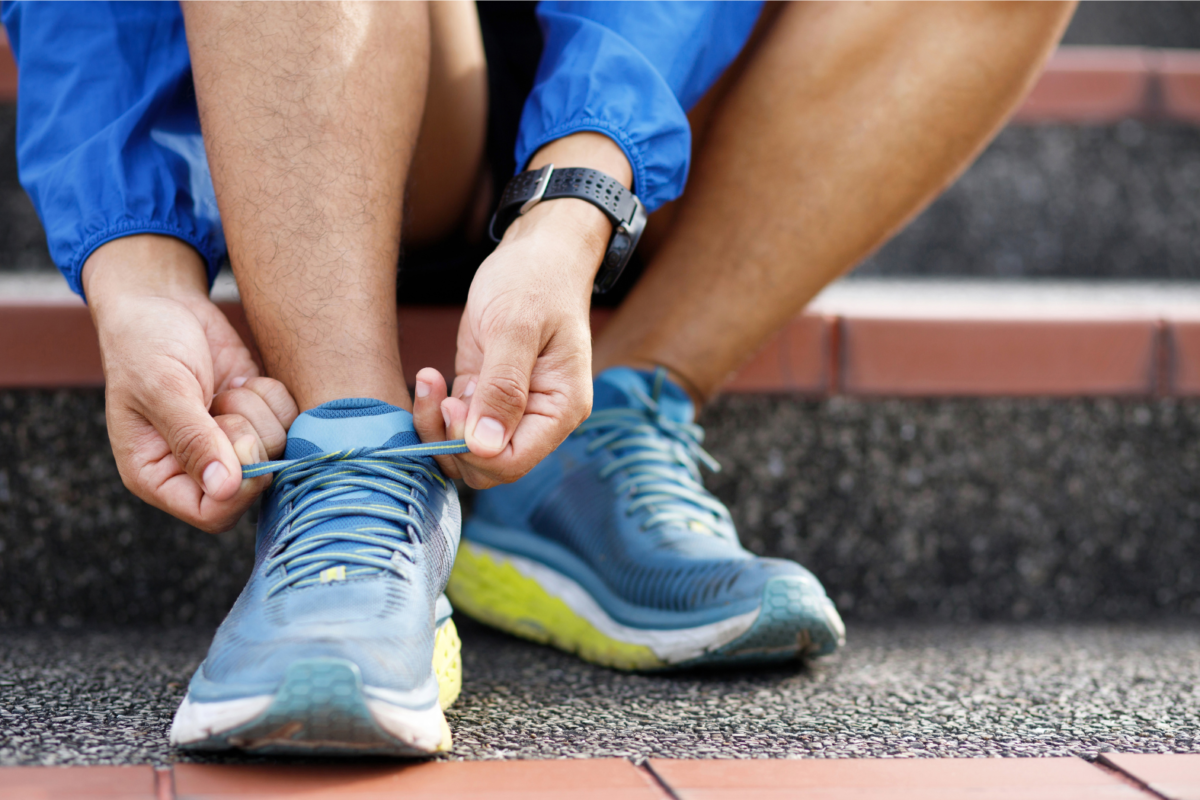
Congratulations on setting a goal to run a long-distance race. You’ve just joined a group of more than 60 million people in the U.S. who participate in organized runs and races. Running doesn’t require much gear, but well-fitting, running-specific shoes are a must.
Someone training for a long-distance run, such as a marathon, can log 800 or more miles before a race. With your feet enduring this kind of mileage, it’s essential to choose the appropriate footwear to maintain the health of your feet and prevent injury.
Shop in the evening.
Throughout the day, your feet retain fluid, causing them to swell. For this reason, it’s best to go shoe shopping late in the day or evening, when swelling is at its maximum. This increases the likelihood of choosing a fit that’s comfortable throughout the day.
Check out specialty shoe stores.
Specialty shoe stores offer valuable services, including in-store fittings and measurements, unique styles, extended sizes, shoes with varying levels of cushion and special inserts. Experienced store associates help customers determine appropriate shoe sizes, style and support to maximize comfort and functionality.
Since you’re starting a running program, ask about shoes designed especially for road running. These shoes tend to have flatter, smoother soles that create a consistent surface for running on roads, sidewalks, tracks and treadmills.
Not all brands are equal.
Shoe size can slightly vary from brand to brand. Don’t be afraid to venture up or down a half or full size if you’re trying a new brand or a new style from a familiar brand.
Choose the right size and fit.
More than two-thirds of the population has one foot that’s larger than the other. This rarely exceeds one-half size. However, this should be considered when buying new shoes.
Always choose your size based on the fit of the larger foot, since the fit of the smaller foot can be easily adjusted by adding an insert or arch support. That’s why it’s important to try on both shoes. If a shoe fits properly, there should be a half-inch of space between your longest toe and the front of the shoe, leaving plenty of room to wiggle your toes.
When trying on shoes, bring your running socks and any custom orthotics.
Accommodate deformities.
Common foot deformities, including bunions and hammertoes, can pose challenges when it comes to footwear. Luckily, many brands offer shoes that are available with extra width and depth to accommodate these deformities and prevent painful corns and calluses from developing. Specialty shoe stores also may provide stretching to accommodate a deformity.
Lace shoes correctly.
How you lace your shoes can improve the fit. To help lock your heel in place, try the runner’s loop. To relieve pressure points on the top of your foot, window or box lacing might work best for you.
Take shoes for a test spin.
Take a stroll around the store, paying attention to any rubbing or discomfort as you stand, walk or jog in place. If a shoe is uncomfortable in the store, it likely will be uncomfortable after wearing it for a month or two. Running shoes that feel right in the store shouldn’t need to be broken in.
Know when to buy a new pair.
Your shoes are going to get a workout as you train. In general, a pair of running shoes lasts 400 to 500 miles or three to four months. Keep an eye on the midsoles and outsoles. If they’re compressed or worn, it’s time to buy a new pair.
If you have questions about foot health, talk with your healthcare professional or schedule an appointment with a podiatrist. Because podiatrists specialize in foot issues, they can provide the best recommendations based on your specific needs.
Stephanie Kvas, D.P.M., is a podiatrist in New Prague and Waseca, Minnesota.




